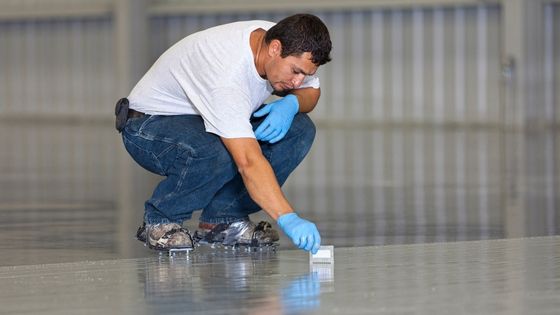Floor paint can transform the look of a room or a surface, providing a durable finish that can withstand daily wear and tear. However, one of the most important factors to consider when painting floors is the drying and curing time of the paint. In this article, we will discuss how long it takes for floor paint to dry and cure, as well as some tips for ensuring that the paint dries and cures properly.



Types of Floor Paints and Drying Times
Different types of floor paints have varying drying times. For example, water-based acrylic and latex floor paints typically dry faster than solvent-based oil or polyurethane floor paints.
Typically, acrylic and latex floor paints will dry to the touch within an hour or two and can be recoated within four hours. Oil and polyurethane, on the other hand, can take up to 24 hours to dry to the touch and may require 48-72 hours to fully cure.
Like other types of floor paints, the drying and curing times for polyurethane floor paints can vary depending on factors such as temperature, humidity, and the thickness of the paint. Generally, polyurethane floor paints will dry to the touch within 24 hours and can be recoated within 24-48 hours. However, it’s important to wait at least 72 hours before subjecting the painted surface to heavy use or foot traffic to ensure proper curing.
Drying vs. Curing
It’s important to understand the difference between drying and curing when it comes to floor paint. Drying refers to the time it takes for the solvents in the paint to evaporate, leaving behind a solid coating. This is the point at which the paint can be touched without damaging the surface.
Curing, on the other hand, refers to the time it takes for the paint to fully harden and reach its maximum durability. Curing can take much longer than drying, and it’s important to wait until the paint is fully cured before subjecting it to heavy use or foot traffic.
Factors That Affect Drying and Curing Time
While the type of floor paint used plays a big role in drying and curing time, there are other factors to consider as well. Humidity and temperature can greatly affect the time it takes for the paint to dry and cure.
High humidity can slow down the drying process by preventing the paint from evaporating quickly. On the other hand, low humidity can cause the paint to dry too quickly, leading to an uneven finish. To avoid these issues, it’s best to paint on a day with moderate humidity levels.
Temperature is also an important factor to consider. When it’s too cold, the paint will take longer to dry and cure. Conversely, when it’s too hot, the paint may dry too quickly, leading to an uneven finish or even cracking.
Tips for Proper Drying and Curing
There are several things you can do to ensure that your floor paint dries and cures properly:
Follow the manufacturer’s instructions
Always read and follow the manufacturer’s instructions for the specific type of floor paint you are using. These instructions will provide guidance on drying and curing times, as well as tips for proper application and preparation.
Allow proper ventilation
Proper ventilation is crucial for allowing the solvents in the paint to evaporate during the drying process. Make sure to open windows and use fans to circulate air in the room while the paint is drying.
Avoid heavy use
It’s important to avoid heavy use or foot traffic on the newly painted surface until the paint is fully cured. This can take several days or even up to a week for some types of floor paints.
Temperature and humidity
Temperature and humidity can affect the drying and curing times of floor paint. Make sure to paint in an environment that is within the recommended temperature and humidity range for the specific type of paint you are using.
Apply thin, even coats
Applying thin, even coats of paint will help ensure that the paint dries and cures properly. Avoid applying too much paint at once, as this can lead to longer drying times and poor adhesion.
The time it takes for floor paint to dry and cure can vary depending on factors such as the type of paint used and the conditions during application. Following the manufacturer’s instructions and taking precautions to ensure proper ventilation and limiting usage until the paint is fully cured are crucial. But with the right preparation and patience, you can achieve stunning, long-lasting results for your floors.
























